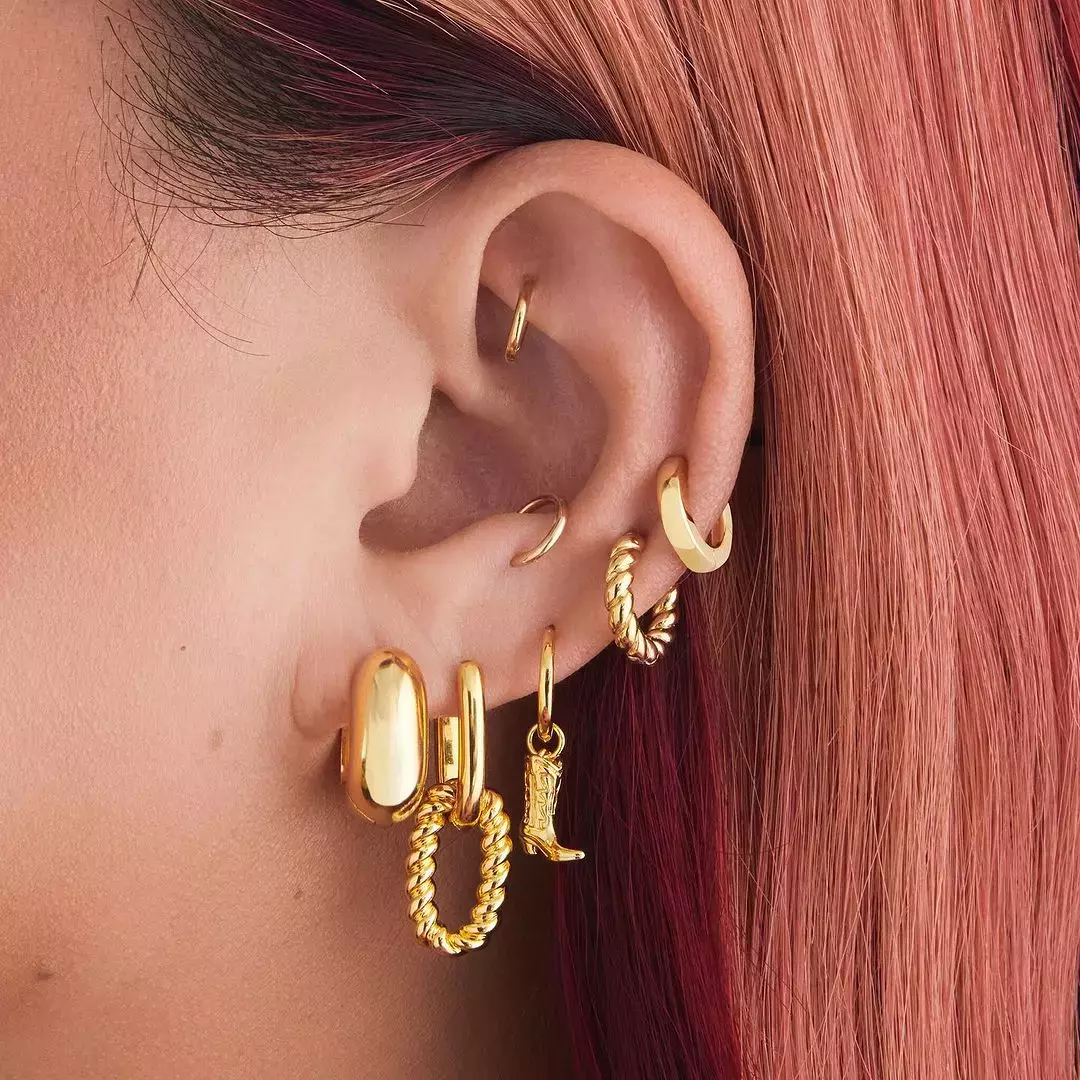
If you’re like me and love changing your lobe earrings daily, you might also get the itch to take your ear game to the next level. After much contemplation, I finally went for a second lobe piercing—and now, I’m hooked! I’m already on the hunt for my next piercing and have been exploring all the different types, from lobes to helix, daith, and more, to find the perfect ear-piercing inspo.
There are so many ear piercings out there that it’s easy to lose track. To simplify things, I chatted with some industry pros—Sam Isaacs, Associate Director of Brand Management at Studs; expert piercer Matt Mayfield; and registered nurse and piercer Samantha Alvarado. Together, we broke down the various piercing types and ways to style them. Plus, I’ve compiled a ton of inspiration pics to help you find a look you’ll love. Warning: You might end up booking your next piercing appointment after reading this!
How Many Ear Piercings Are There?
Believe it or not, there are more than a dozen types of ear piercings to choose from. Some, like the classic lobe, are probably familiar, while others—like the snug or anti-helix—might be new to you. Need some visuals to help you decide? I’ve got you covered, so let’s dive in!
Conch Piercing
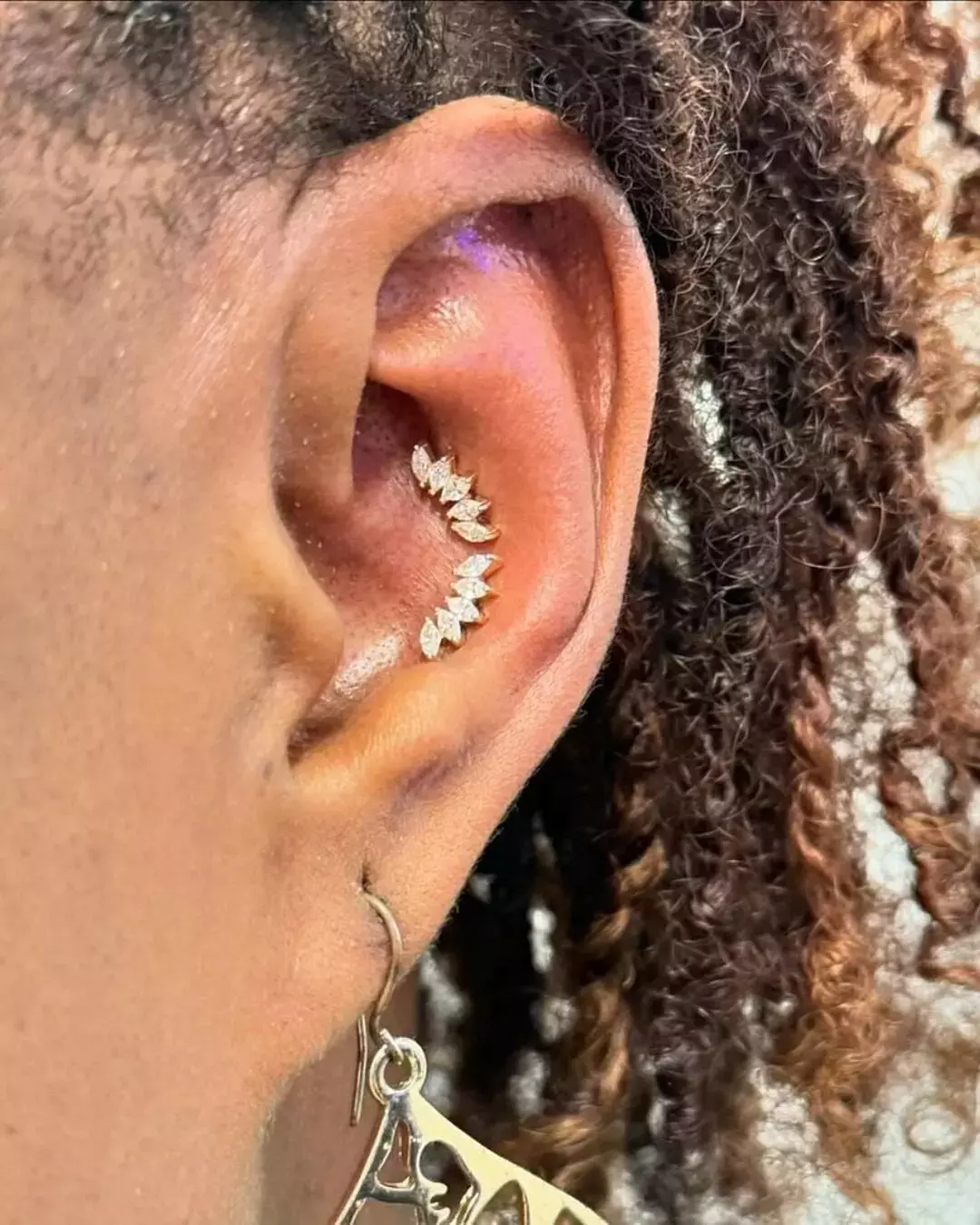
Placed in the middle of the ear’s cartilage, conch piercings are gaining popularity, and it’s not hard to see why. They’re relatively easier to heal compared to other cartilage piercings because they’re less prone to irritation. Whether you choose a single stud or a hoop, this piercing always adds a touch of sparkle.
Lobe Piercings
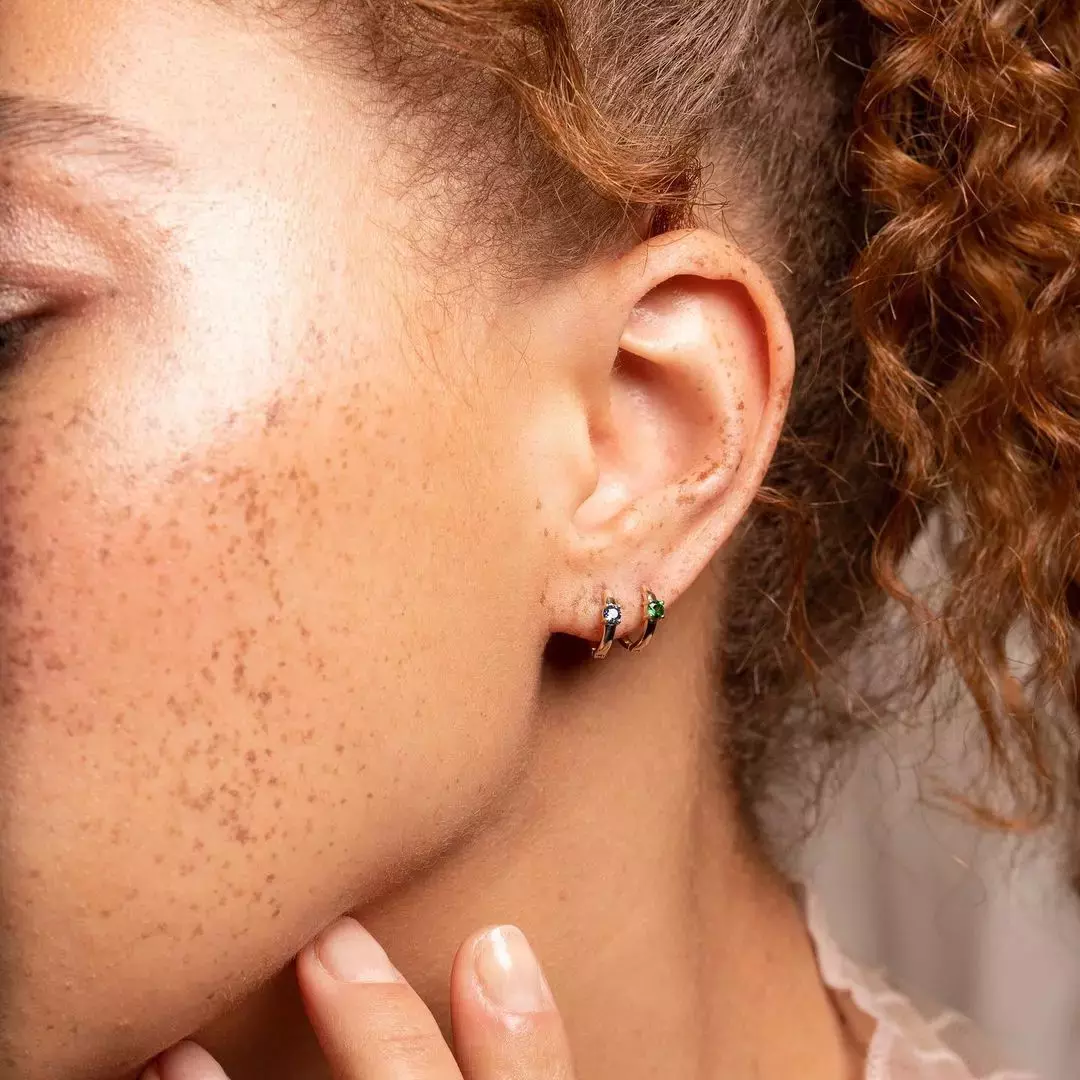
Lobe piercings are the most common and least painful since they’re done on the fleshy part of your ear, away from cartilage. According to Sam Isaacs, they’re perfect if you’re testing the waters of ear piercings. If you’re looking to switch up your look without committing to something too intense, a double lobe piercing is a great way to start.
Helix Piercing
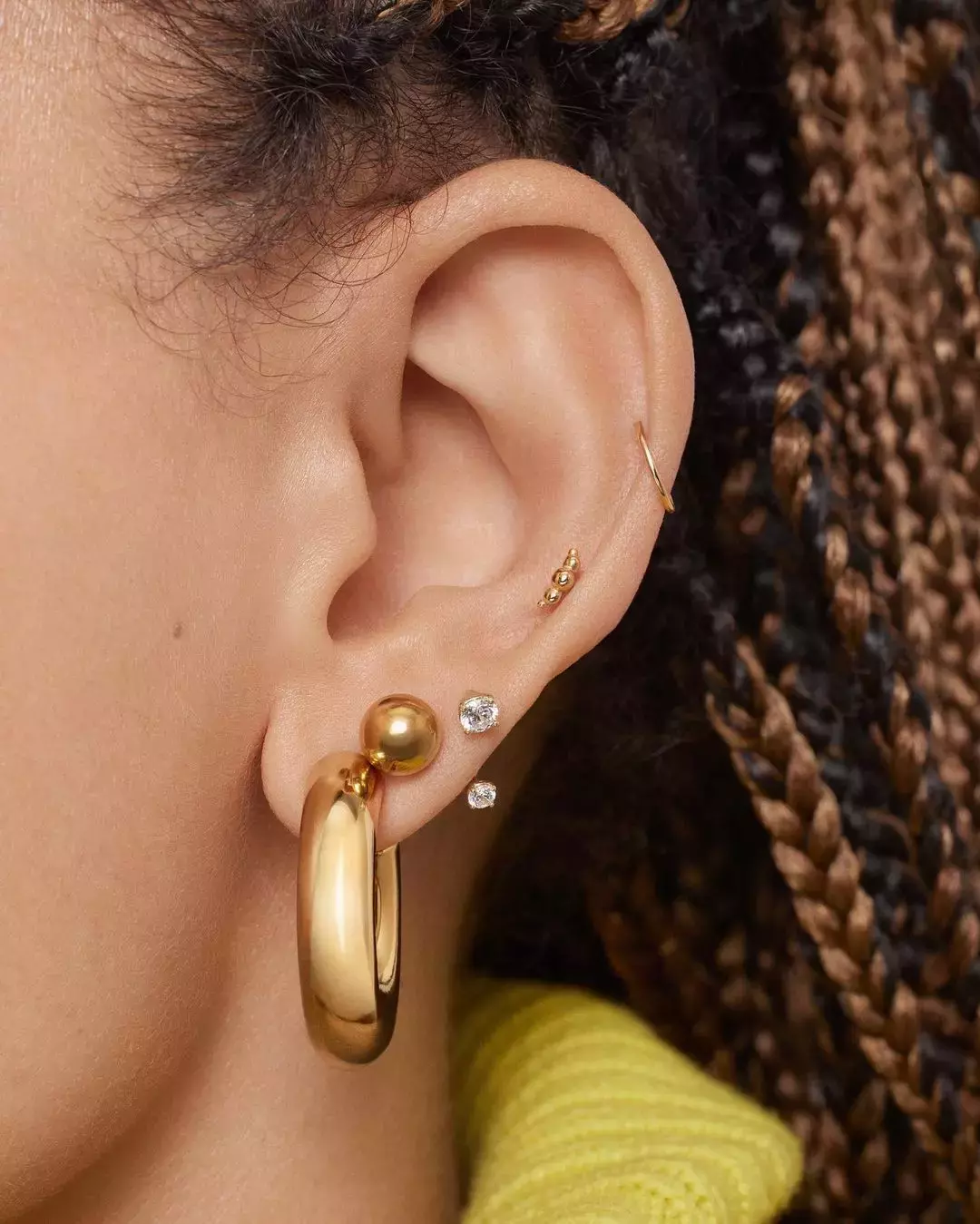
Often the next step after a lobe piercing, helix piercings go through the upper cartilage of the ear. Alvarado notes that many people choose this piercing to test the waters before exploring more “exotic” styles. Helix piercings are incredibly versatile—try a mini hoop, a flat-back stud, or experiment with different placements to suit your aesthetic.
Rook Piercing
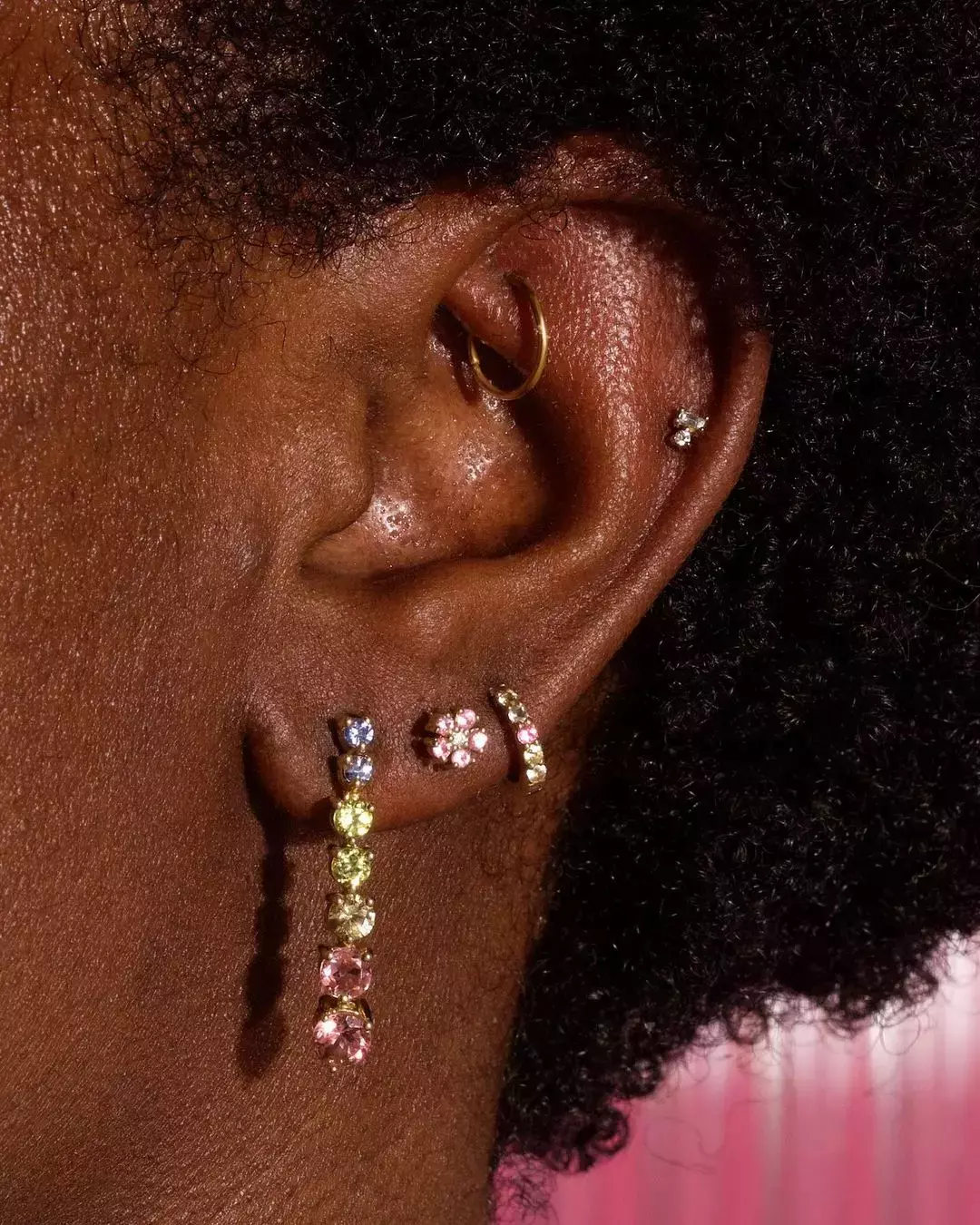
The rook piercing sits in the inner ear fold and is often adorned with a curved barbell or a mini hoop. It adds an edgy element to a stacked lobe and can complement various jewelry styles, from simple studs to colorful gems.
Snakebite Piercing
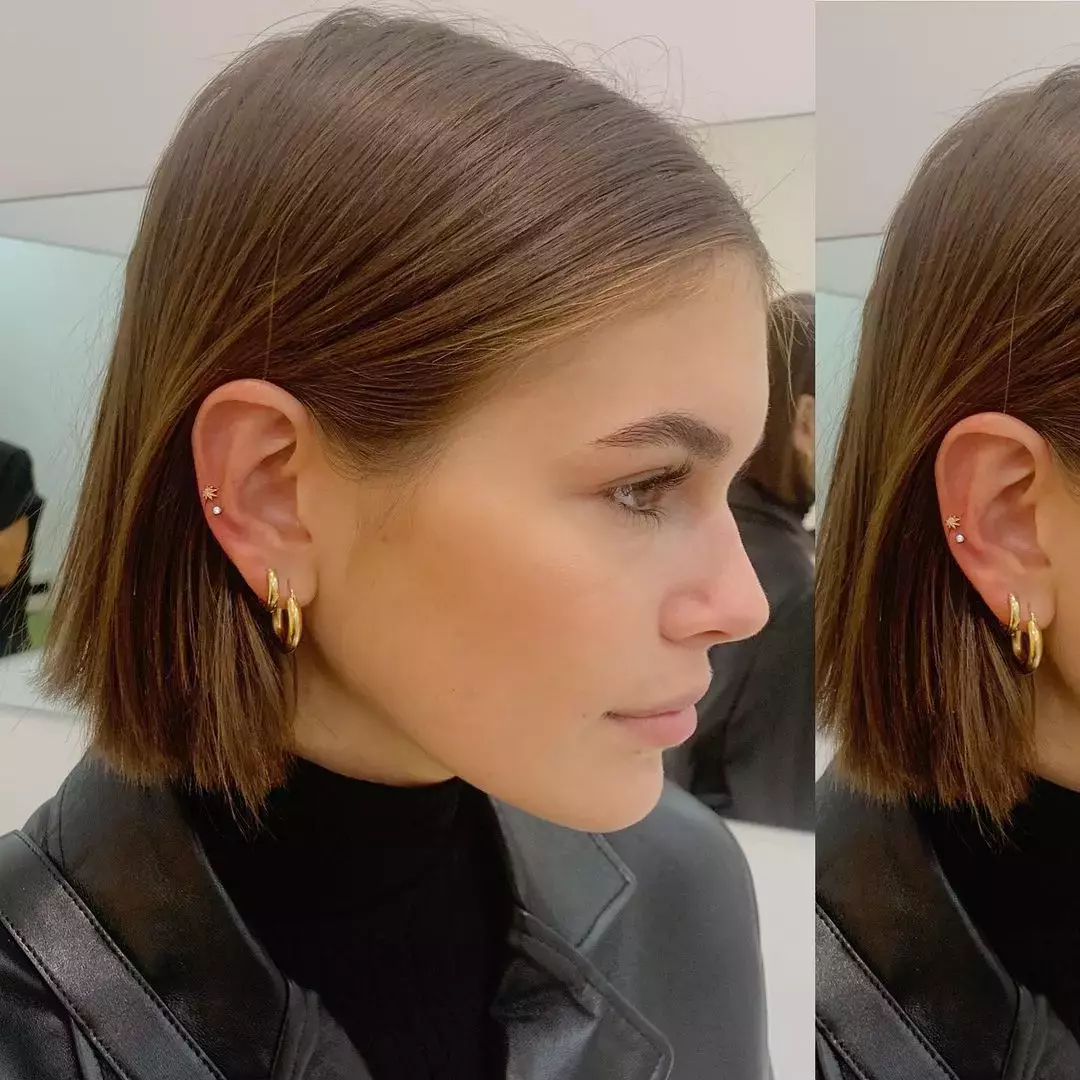
A snakebite piercing features two close-together piercings and can be done on various parts of the ear, including the mid-helix or lobe. This style was initially popularized with a mid-helix placement, but according to Isaacs, many people now opt for snakebites in different areas. It’s a unique way to double up on jewelry!
Double Forward-Helix Piercing
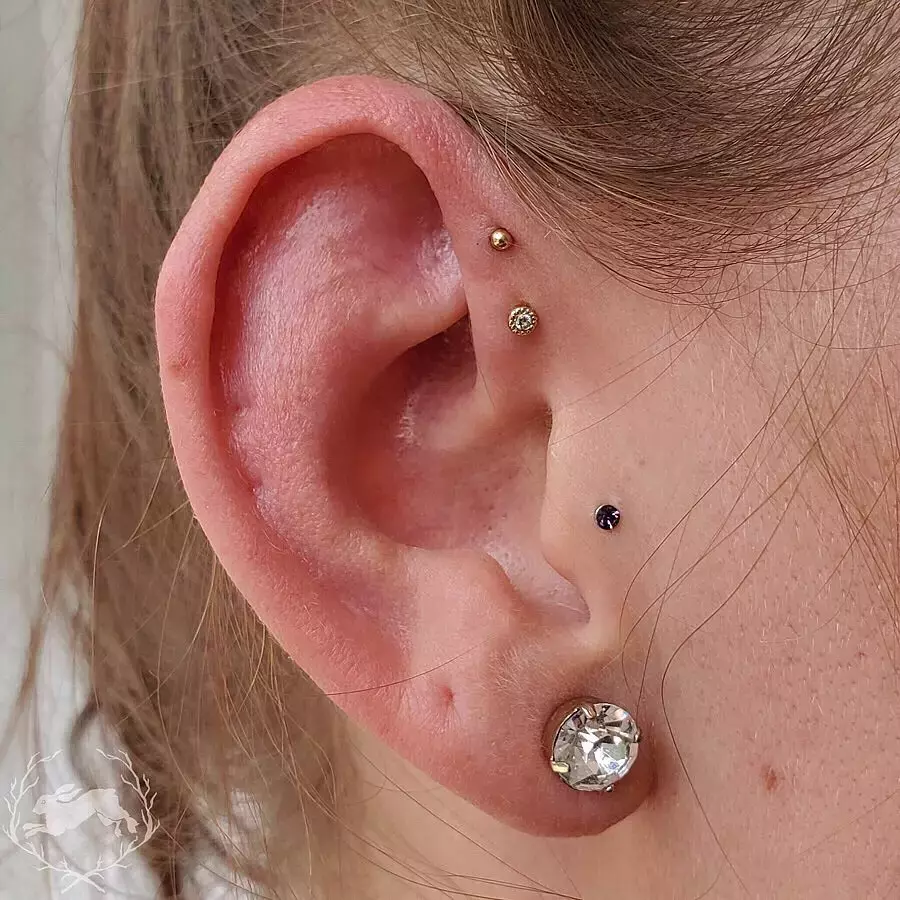
Similar to the snakebite, a double forward-helix piercing is done higher up on the helix near the front of the ear. Matt Mayfield describes this piercing as the perfect little pop that pairs well with any earring stack. It’s like the go-to pair of shoes you know will match every outfit.
Upper Lobe Piercings
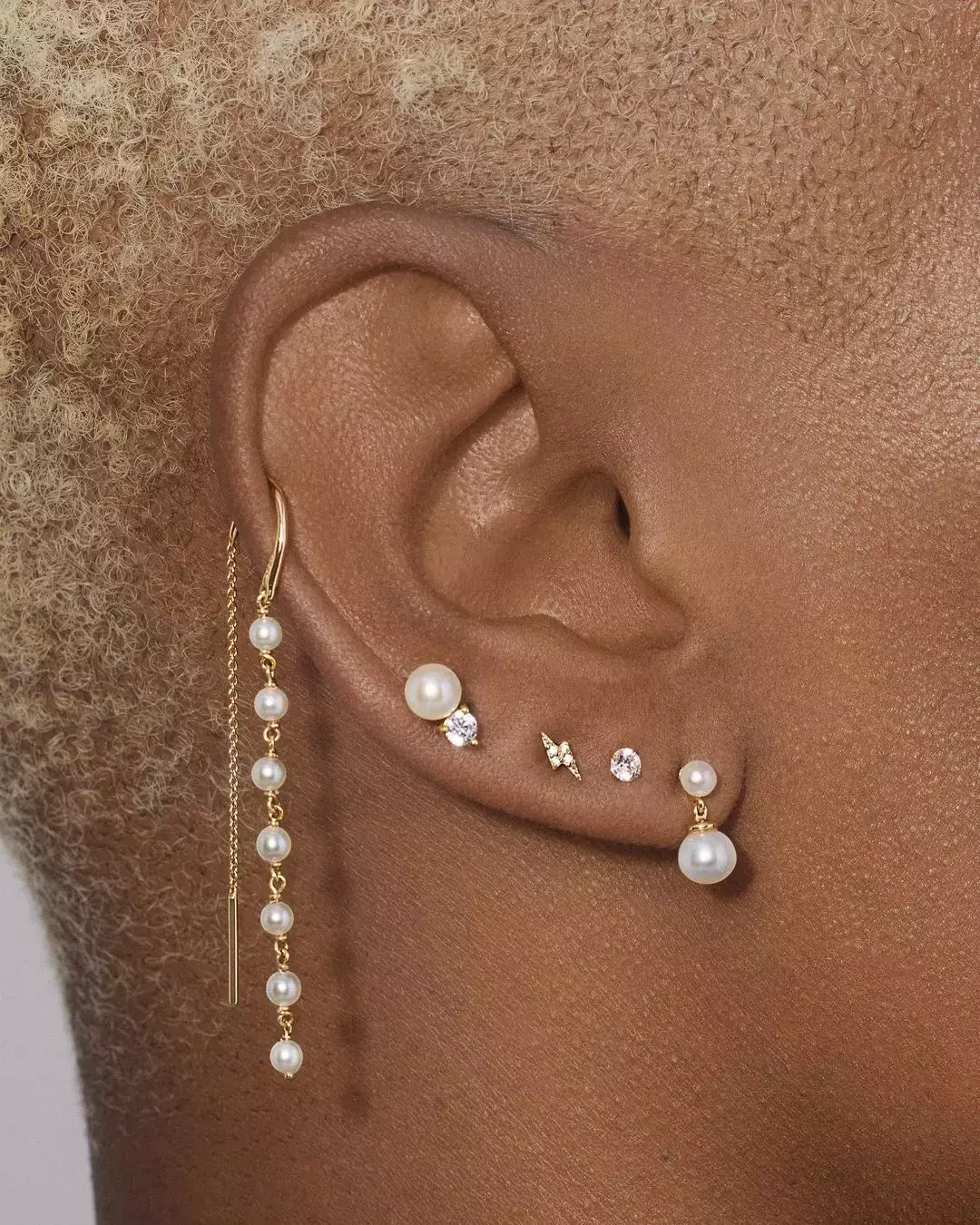
Thinking about adding a second, third, or even fourth lobe piercing? Now’s the time! Upper lobe piercings are relatively low on the pain scale, especially since they avoid cartilage. They’re also super versatile and timeless—swap out jewelry easily to match any mood or occasion.
Industrial Piercings
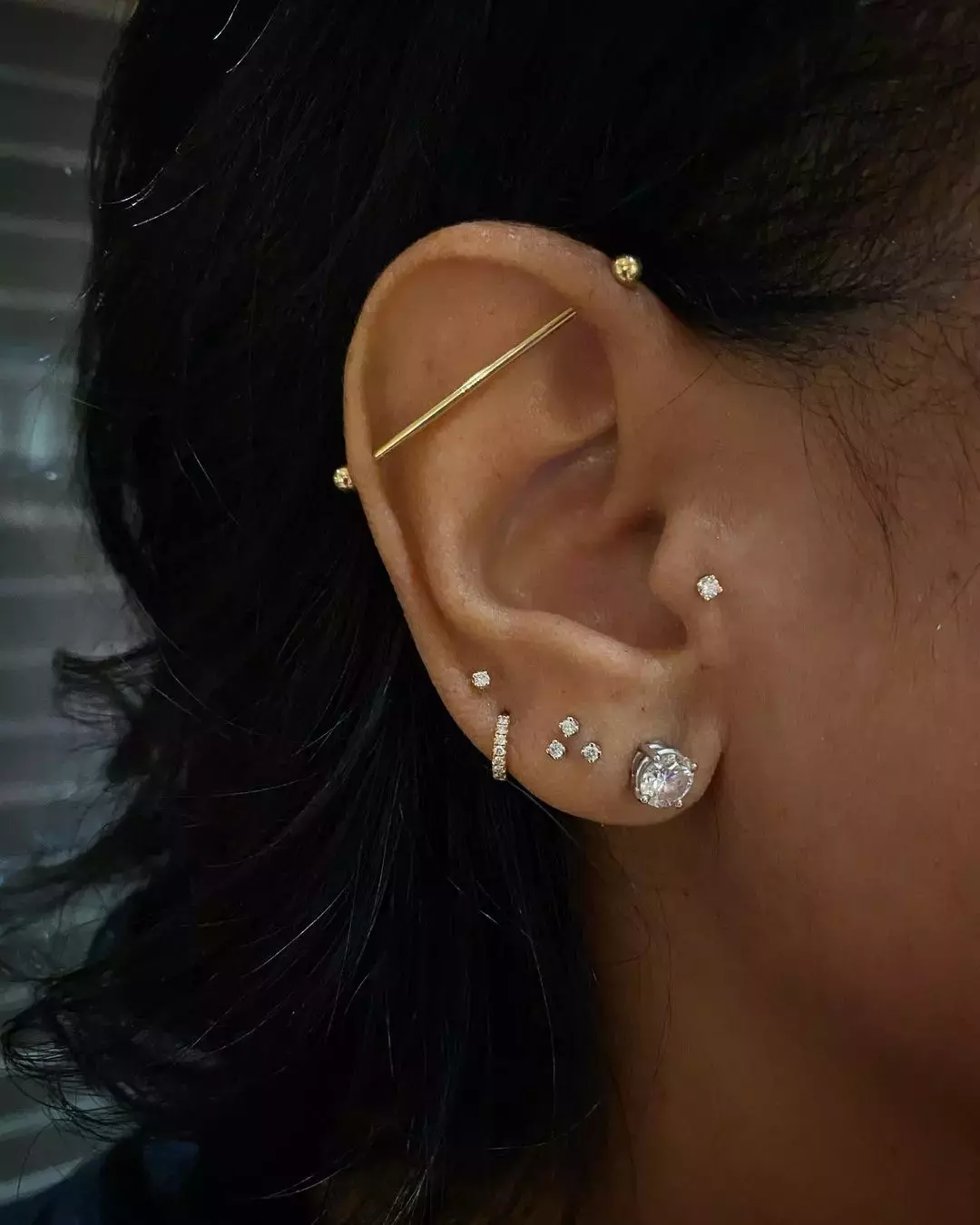
For those craving a bolder look, the industrial piercing might be just the ticket. It involves two cartilage piercings connected by a single piece of jewelry, usually a barbell. This piercing stands out on its own but also pairs beautifully with daintier piercings like tiny diamond studs for a curated ear look.
Snug Piercing
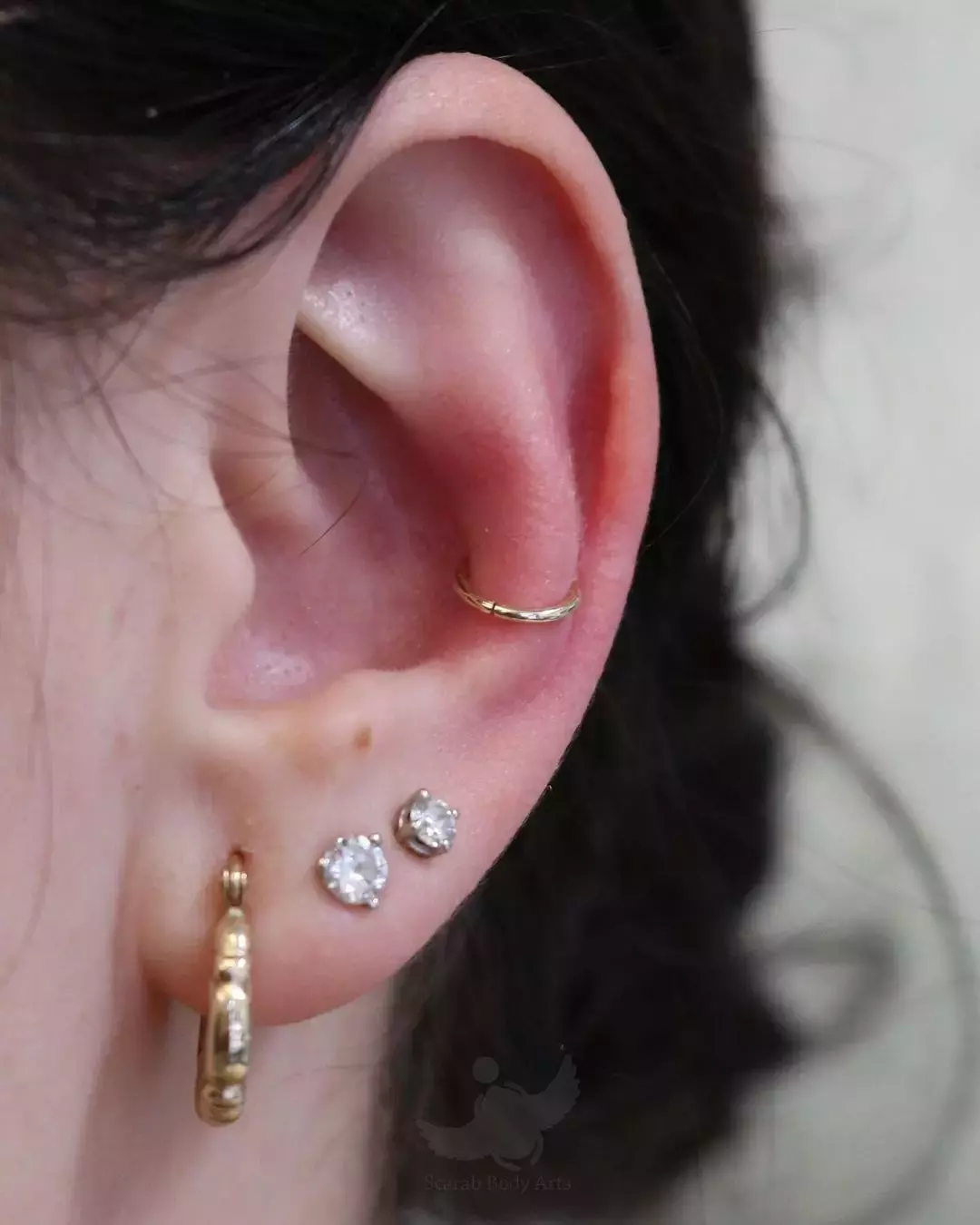
Placed in the cartilage just above the anti-tragus, snug piercings are usually adorned with a curved barbell. Once healed, you can switch it up with a hoop to match the rest of your ear stack.
Transverse Lobe Piercing (Horizontal Lobe Piercing)
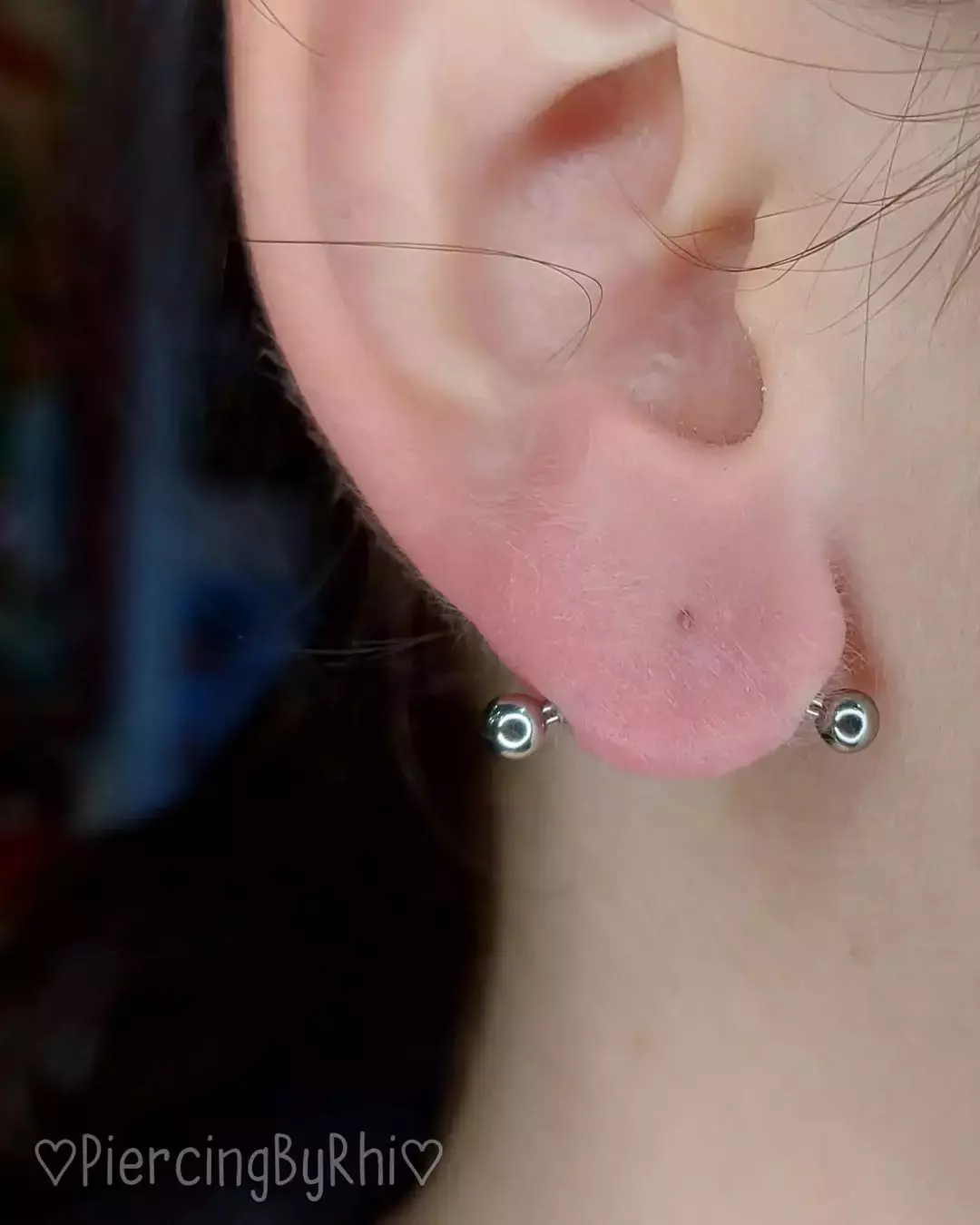
The transverse lobe piercing is a fun twist on the classic lobe piercing. Instead of going through the ear front-to-back, the piercing runs horizontally across the lobe. Often adorned with a barbell, it gives off an industrial vibe while still being playful.
Orbital Piercing
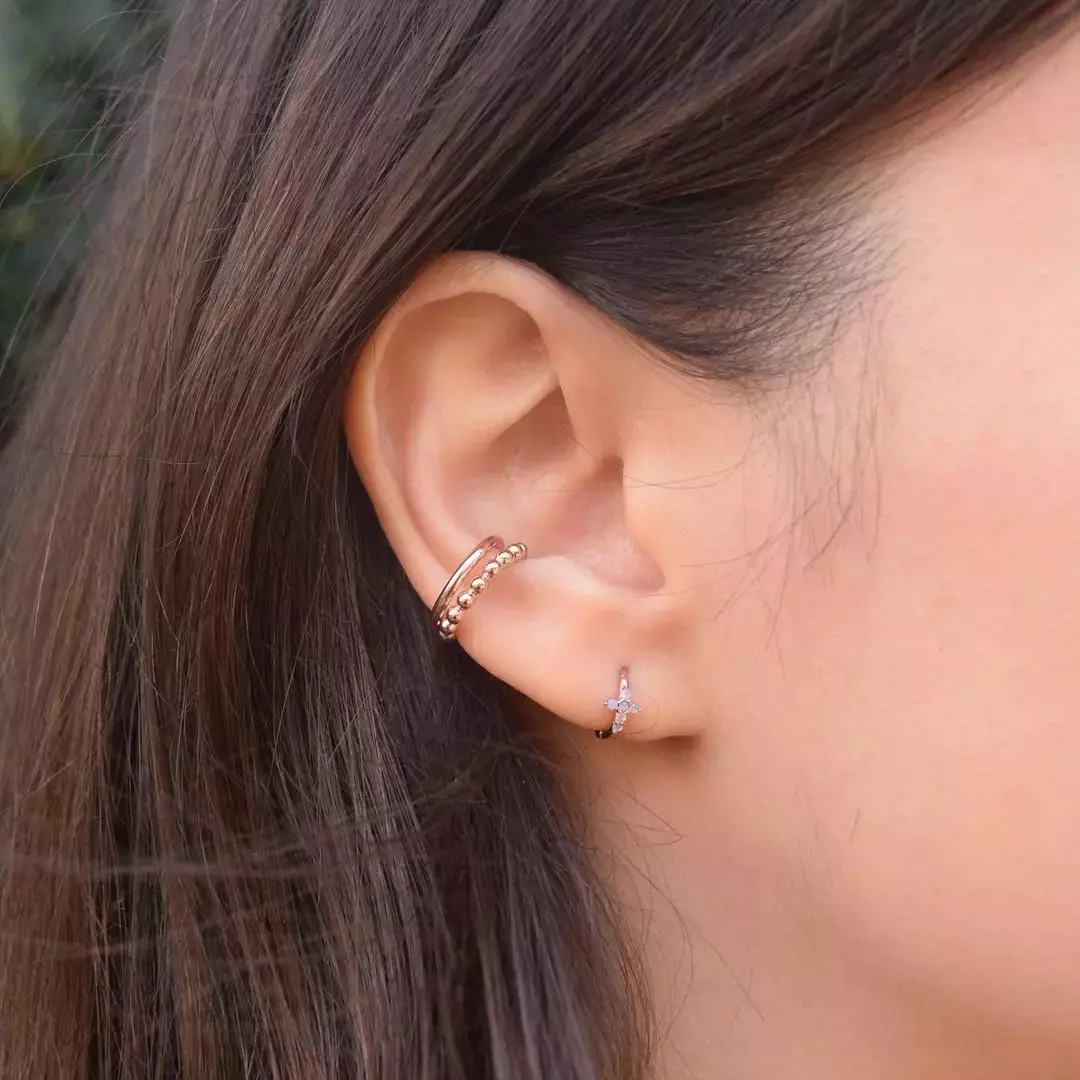
An orbital piercing involves a ring piercing that connects two holes in the conch. It’s a bit more complex, but when done right, it adds a stylish loop to your curated ear. Not ready for the commitment? Try an ear cuff to mimic the look!
Daith Ear Piercing
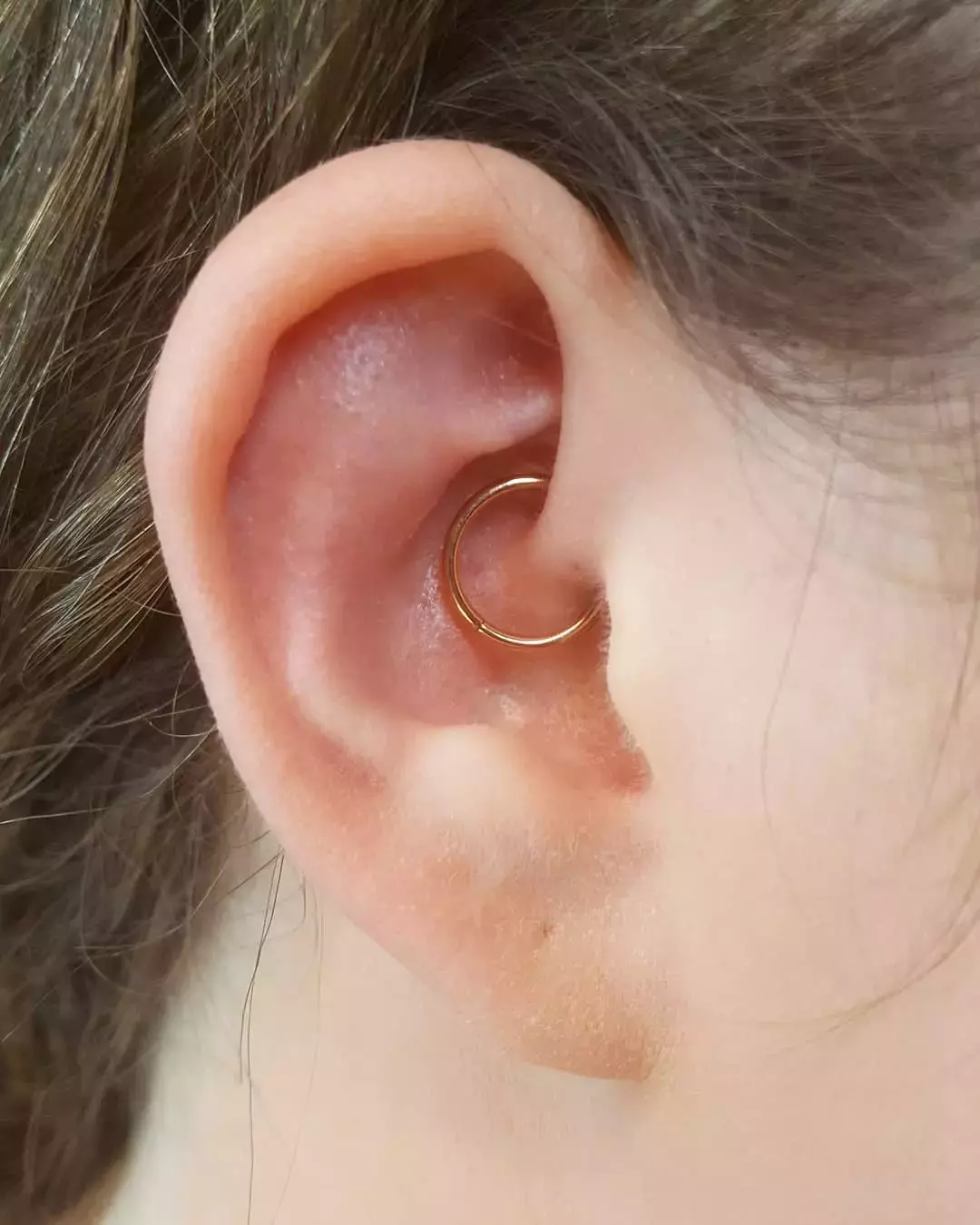
Daith piercings are known to be on the more painful side due to the thick cartilage, but the result is stunning! They’re less common than conch or tragus piercings, making them real head-turners. Sam Isaacs recommends using a seamless clicker hoop for a continuous, clean look.
Stacked Lobe Piercings
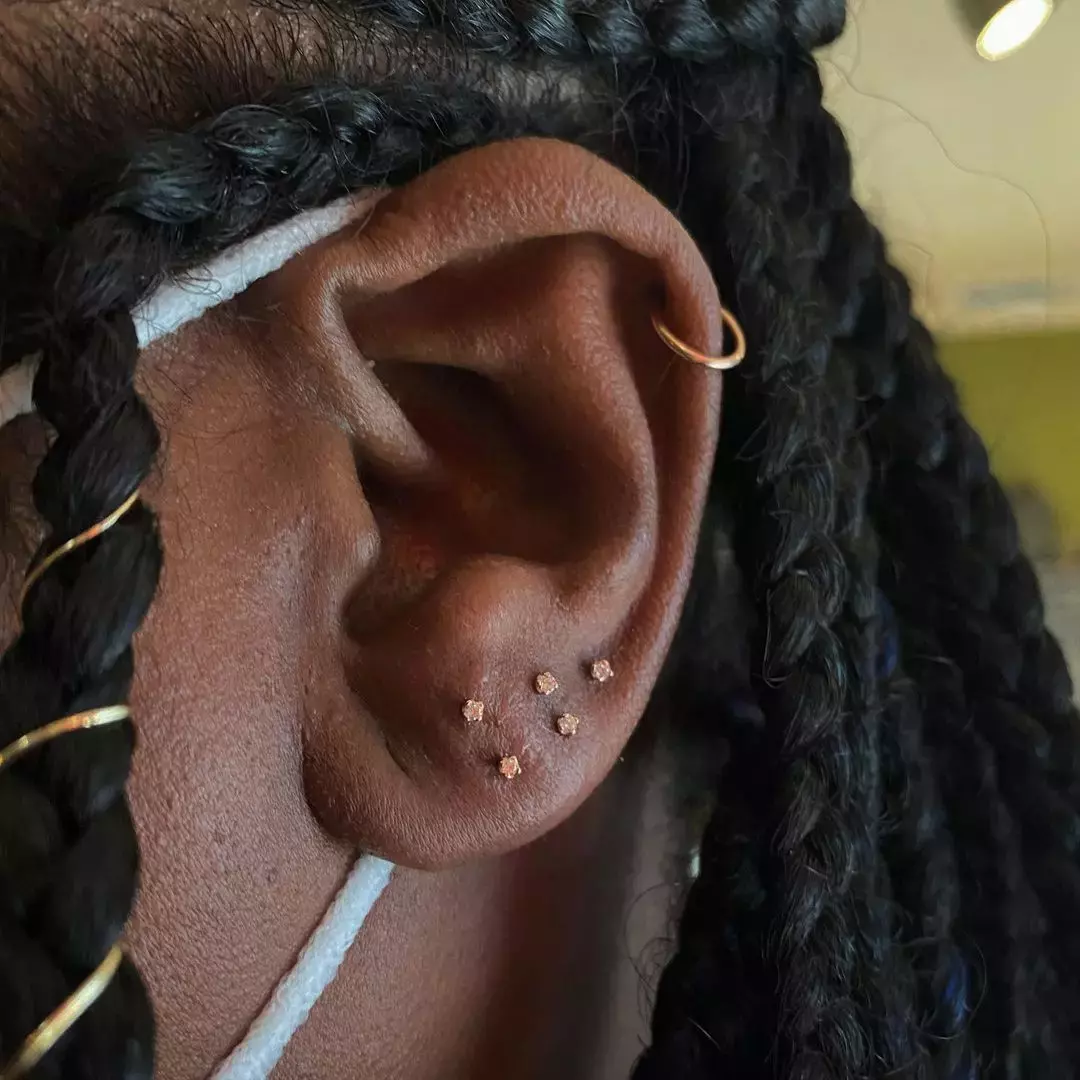
If you’re short on space for traditional lobe piercings, stacking them vertically can create a cool, layered effect. Use small round studs or mix in celestial-inspired pieces, like tiny star earrings, to achieve a constellation-like vibe.
Tragus Piercing
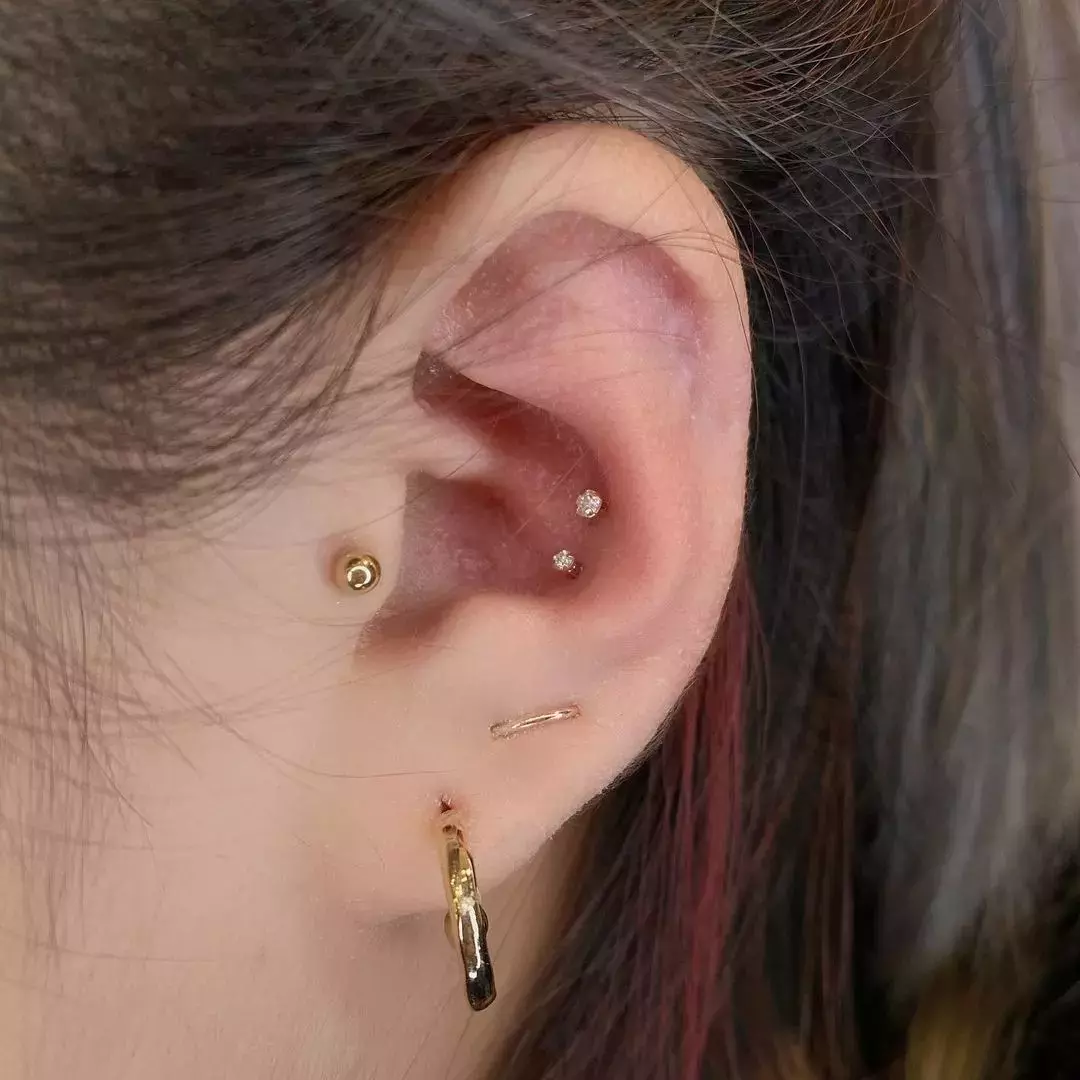
Located on the small flap that partially covers the ear canal, tragus piercings are a chic way to change up your ear game. However, they can be tricky to heal if you use earphones or AirPods frequently, so keep that in mind!
Inner Conch Piercing
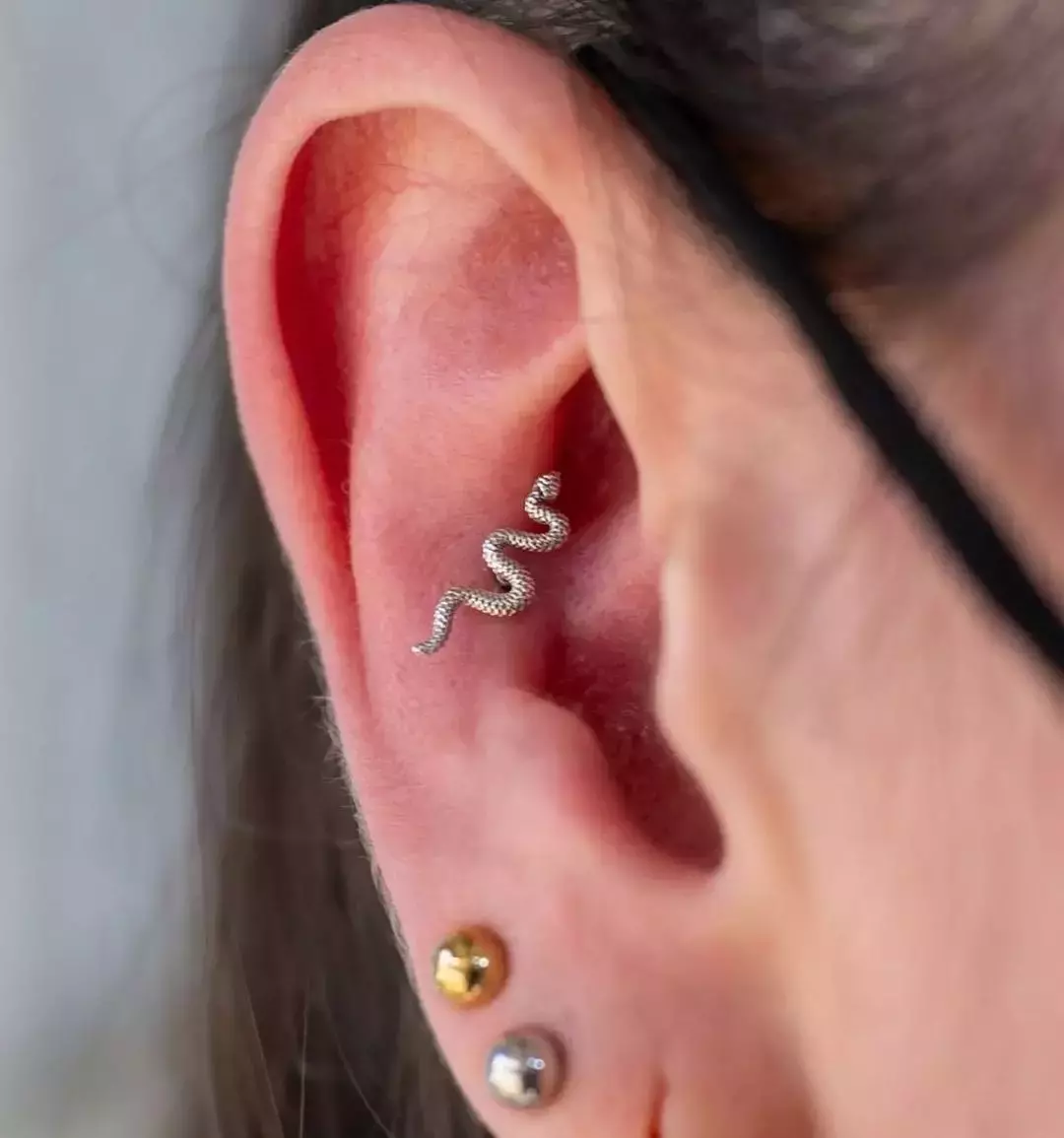
For those wanting something a bit more adventurous, the inner conch piercing is a great option. This piercing goes through thicker cartilage and can be adorned with statement jewelry, like a snake stud, for a unique look.
Flat Piercing
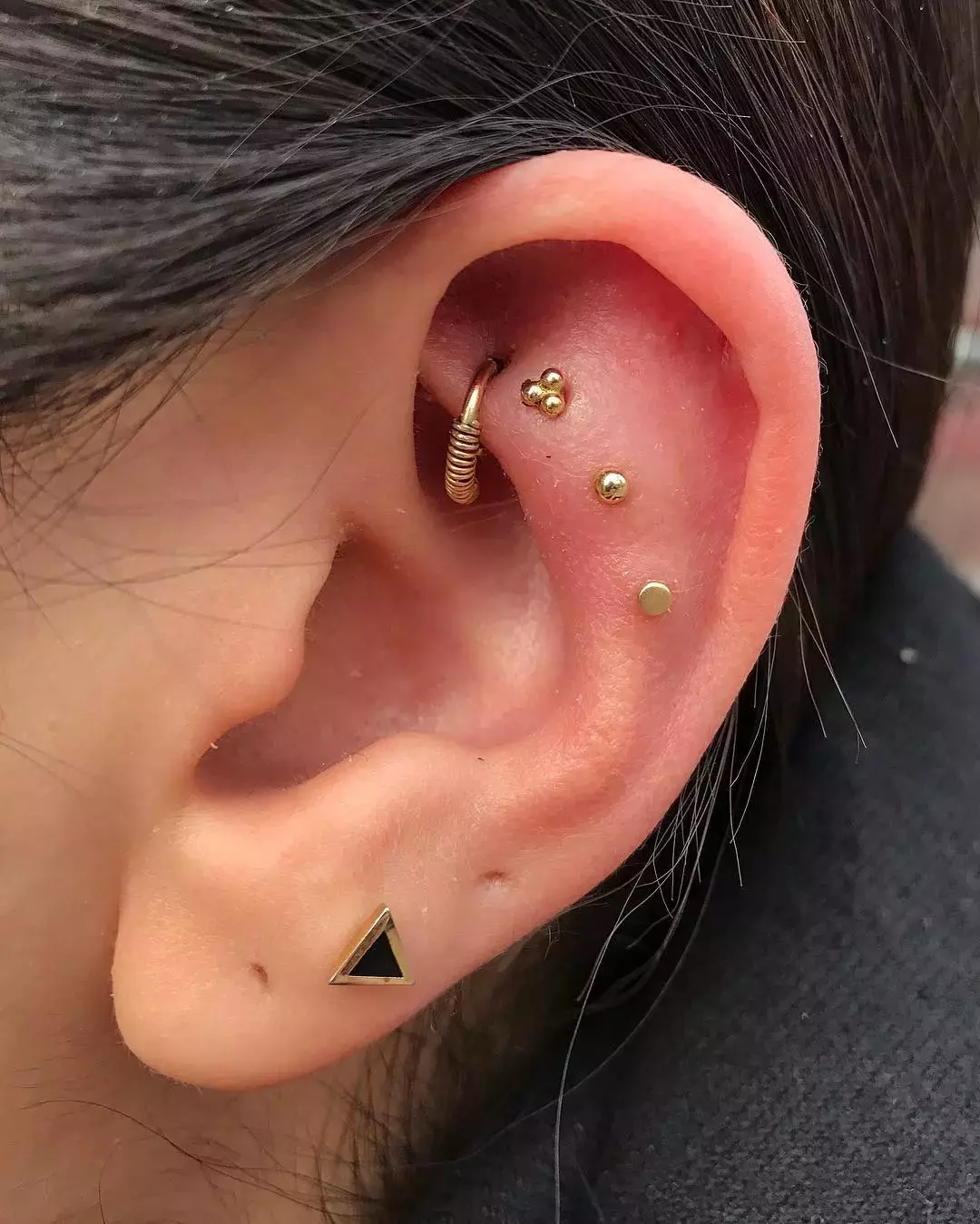
Flat piercings go through the flat part of the ear’s cartilage, usually adorned with small studs. This area is perfect for layering multiple piercings, allowing for some creative stacking with different sizes and metals.
Anti-Tragus Piercing

The anti-tragus piercing sits just above the earlobe and is usually done with a curved barbell to fit the shape of the ear. It pairs beautifully with other piercings, like a helix or snug, for a fully curated ear look.
Ear Piercing Ideas to Try in 2024
Now that you’re familiar with the basics, let’s explore some trendy ear-piercing styles and ideas that are expected to be big in 2024. Whether you’re adding to your curated ear stack or trying something completely new, these suggestions are sure to inspire your next piercing!
Constellation Ear Piercing
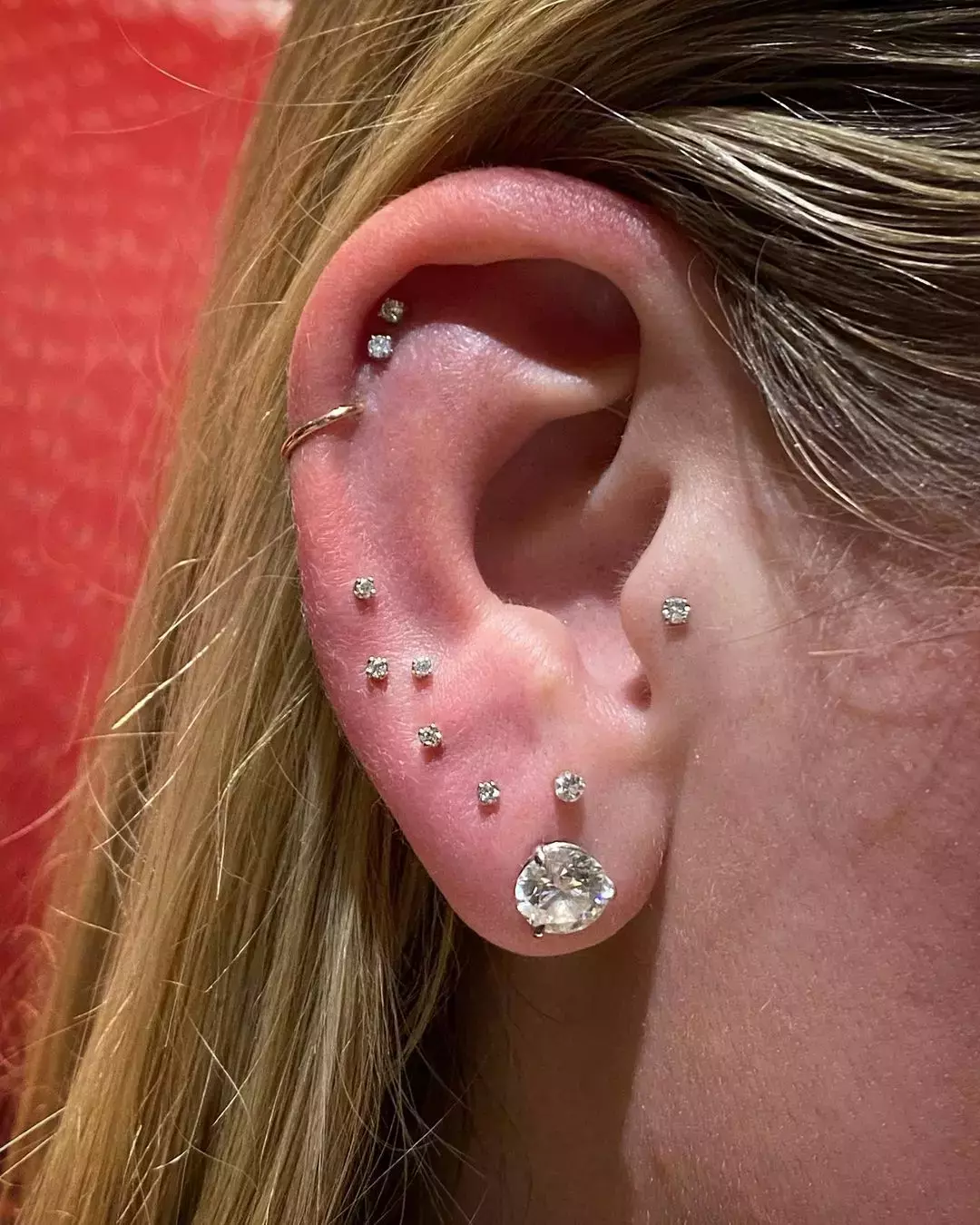
“Constellation piercings are on the rise,” says Alvarado, and it’s easy to see why. This style allows for total customization, blending hoops and studs to create a starry arrangement across your ear. You can experiment with placements, whether sticking to a cluster of lobe piercings or incorporating cartilage and flat areas for a truly one-of-a-kind ear stack. The versatility of this trend means you can go subtle or bold, making it a fun option to play around with different earring sizes, shapes, and metals.
Rearscaping
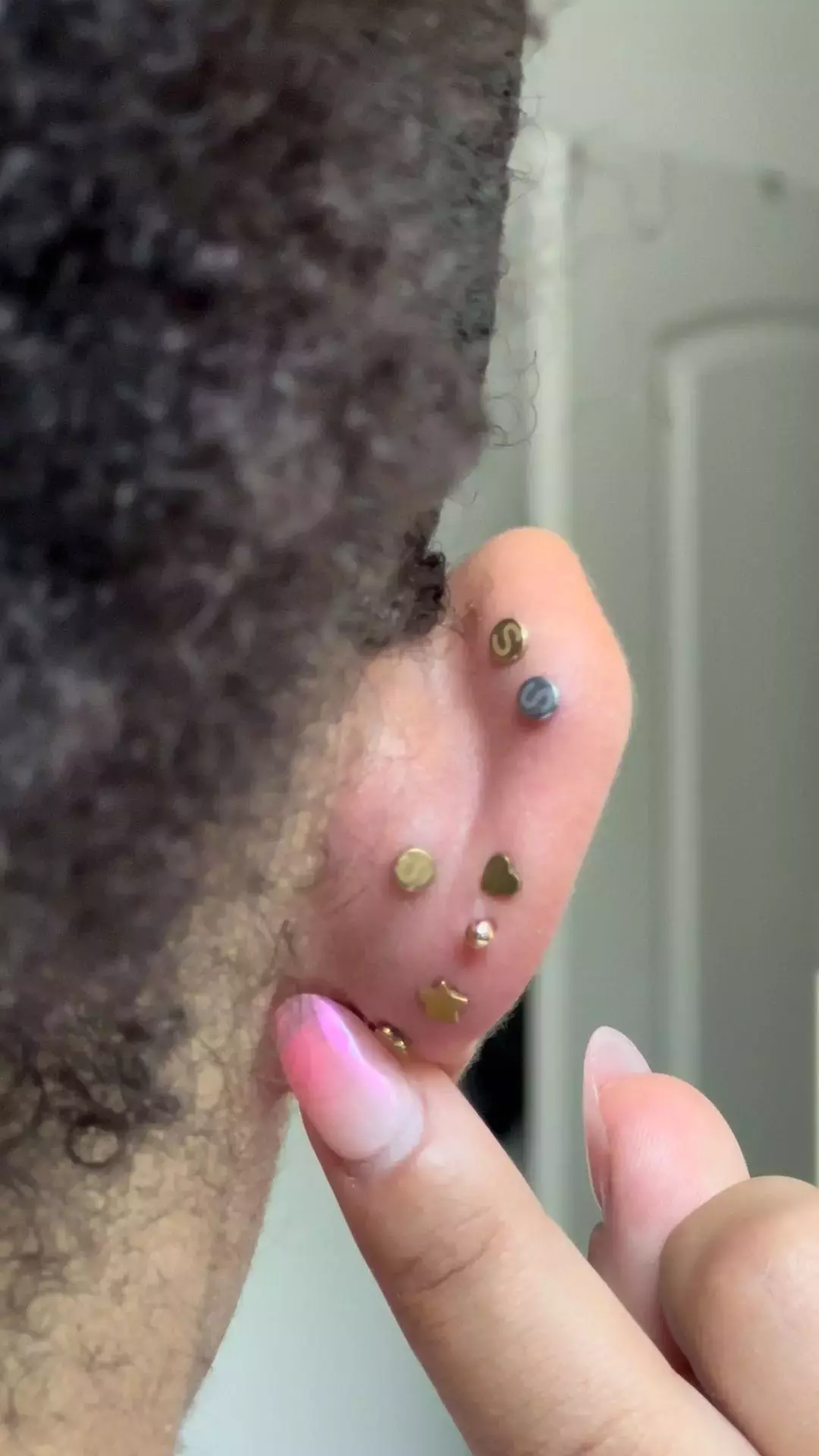
If you have multiple ear piercings, you might get tired of those pesky earring backs poking you. Enter: rearscraping! Jewelers are now offering decorative or reversible flat-back studs designed to make the back of your ear just as chic as the front. “Rearscaping is the next big thing!” Isaacs declares. This trend not only enhances comfort but also elevates your overall ear look, creating a polished, fully curated effect from every angle.
Orbital Jewelry
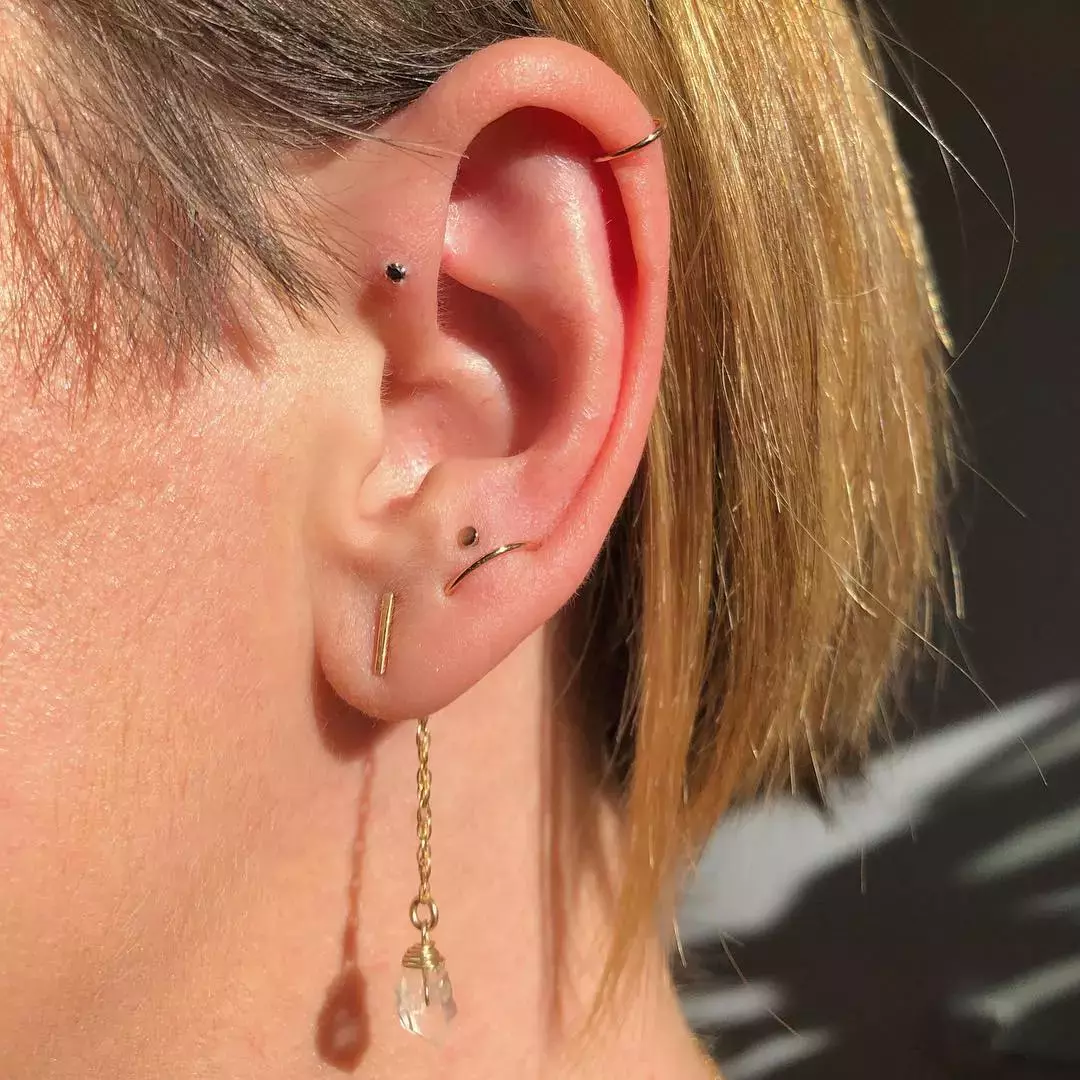
If you’re intrigued by the idea of an earring spanning across the ear but aren’t quite ready for a transverse lobe piercing, try orbital jewelry. Not to be confused with an orbital piercing (typically a ring through the conch), orbital jewelry involves a curved ring that connects two piercings. You can even mimic this look with an ear climber stud for a low-commitment version. It’s an elegant yet edgy way to add a continuous line of sparkle to your ear, offering an intriguing visual effect.
Snakebite Stacked Lobe
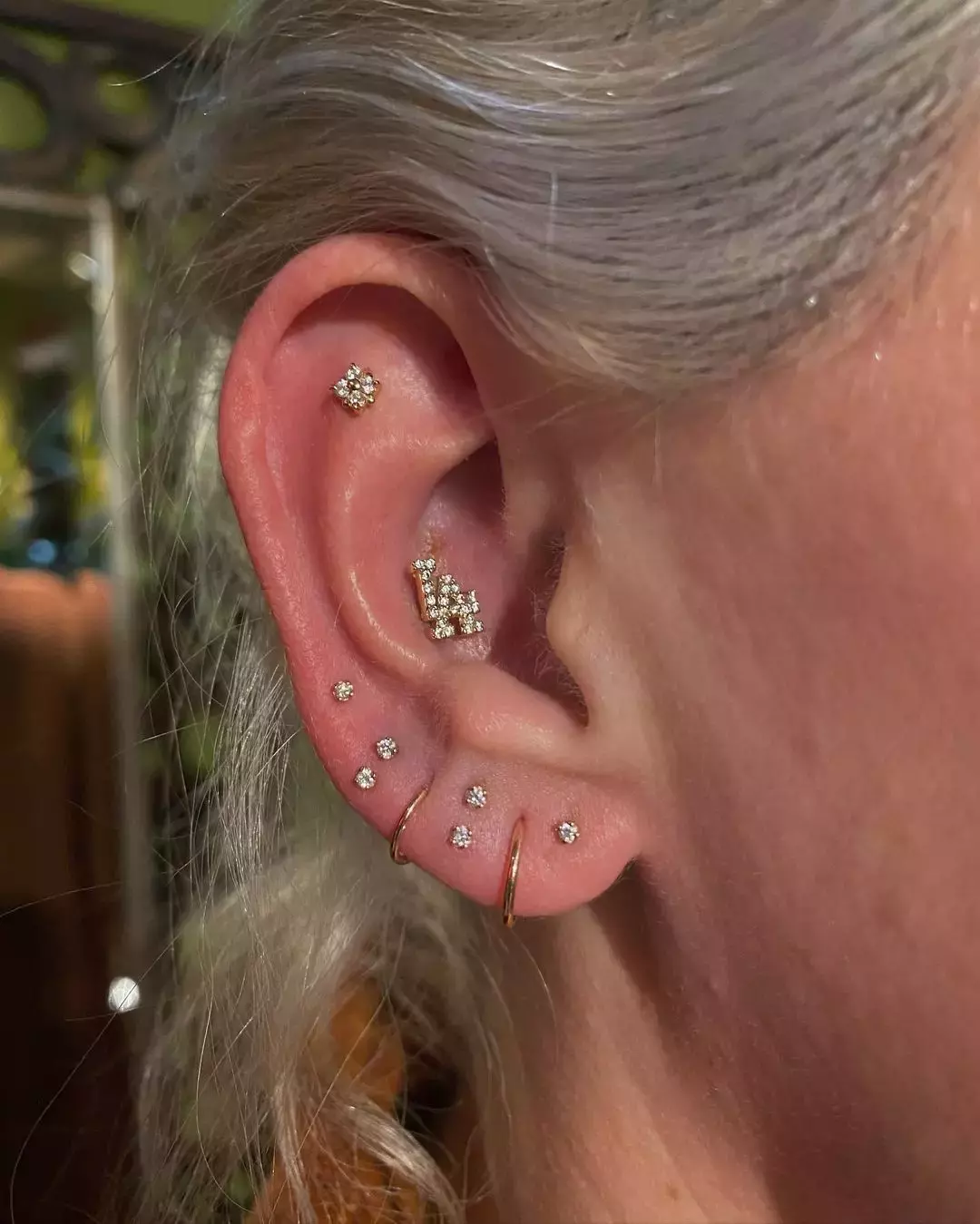
“Recently, we’ve seen a surge in the popularity of snakebite piercings done as stacked lobe piercings,” Isaacs shares with Cosmo. The beauty of the snakebite stacked lobe is in its placement—multiple double piercings stacked vertically along the lobe create a unique layered effect. This look is all about customization; once healed, you can choose how to style it with a mix of earrings, studs, or hoops to suit your personal aesthetic.
Can You Get Multiple Piercings in One Day?
Yes, you can get multiple piercings in a single session, but it depends on your pain threshold and the piercer’s guidelines. Most professional piercers recommend a limit of three piercings in one visit to avoid overwhelming your body. They often suggest waiting four to six weeks between piercings to allow your skin to heal and prevent excessive trauma. It’s a good idea to discuss your piercing goals with your piercer before your appointment. They can help you decide if getting several piercings at once or spacing them out over time is the better option for you.
What Piercings Heal the Fastest?
According to piercer Samantha Alvarado, lobe piercings are the quickest to heal, typically taking about 4-6 months. In contrast, cartilage piercings, such as the helix or conch, require more time and care during the healing process. Cartilage areas are thicker and more prone to irritation, so patience and a proper aftercare routine are crucial for these piercings to heal successfully.
What Are the Most Painful Ear Piercings?
“Piercings in the thicker parts of the ear cartilage, like the daith or snug, are often considered more painful than those in the softer areas,” explains Isaacs. However, pain tolerance varies from person to person. What might be quite uncomfortable for one person could be more manageable for another. If you’re concerned about pain, discuss it with your piercer, as they can provide tips on what to expect and how to prepare.
What Is the Best Aftercare for Piercings?
Proper aftercare is essential for a smooth healing process. Start by cleaning the piercing site with a saline solution twice a day for the first two weeks, then once daily for another two weeks. Avoid touching the area as much as possible to prevent introducing bacteria. Alvarado advises disinfecting anything that comes into contact with your ear, like headphones or earrings, at least once a day.
Lobe piercings usually take about 4-6 months to heal completely, though some piercers may suggest that you can start changing earrings after 2 months. Inner and upper ear piercings, such as the helix or conch, can take 6 months to a year to fully heal. The key is to be patient; avoid changing your jewelry too soon and minimize irritation to the piercing. “Your piercing should continue to feel better over time, especially if you follow a consistent aftercare routine, including the use of sterile saline solution, rinsing with water, and avoiding direct pressure, like sleeping on it,” says Isaacs.
Pro Tip: If you notice any signs of inflammation, swelling, or pus-like discharge, reach out to your doctor immediately. These symptoms could indicate an infection or allergic reaction. However, by following the recommended aftercare practices, your piercing is likely to heal beautifully!
FAQs
Q: How long should I wait before changing my piercing jewelry?
A: For lobe piercings, it’s generally recommended to wait at least 2-3 months before changing your jewelry, although full healing can take up to 4-6 months. For cartilage piercings, you should wait at least 6 months to a year to ensure proper healing. Always consult with your piercer before making any changes to your jewelry.
Q: Is it normal for a new piercing to swell or get red?
A: Yes, some initial redness and swelling are normal for the first few days to a week after getting a new piercing. However, if the swelling persists, becomes painful, or is accompanied by discharge, it could indicate an infection. In such cases, it’s best to consult your piercer or a healthcare professional for advice.
Q: Can I swim with a fresh piercing?
A: It’s best to avoid swimming in pools, hot tubs, lakes, and oceans for at least the first 2-4 weeks after getting a new piercing. These water sources can contain bacteria that may cause infections. If you must swim, protect your piercing with a waterproof bandage and clean it immediately afterward with a saline solution.



